
How to Use Adafruit BME280: Examples, Pinouts, and Specs
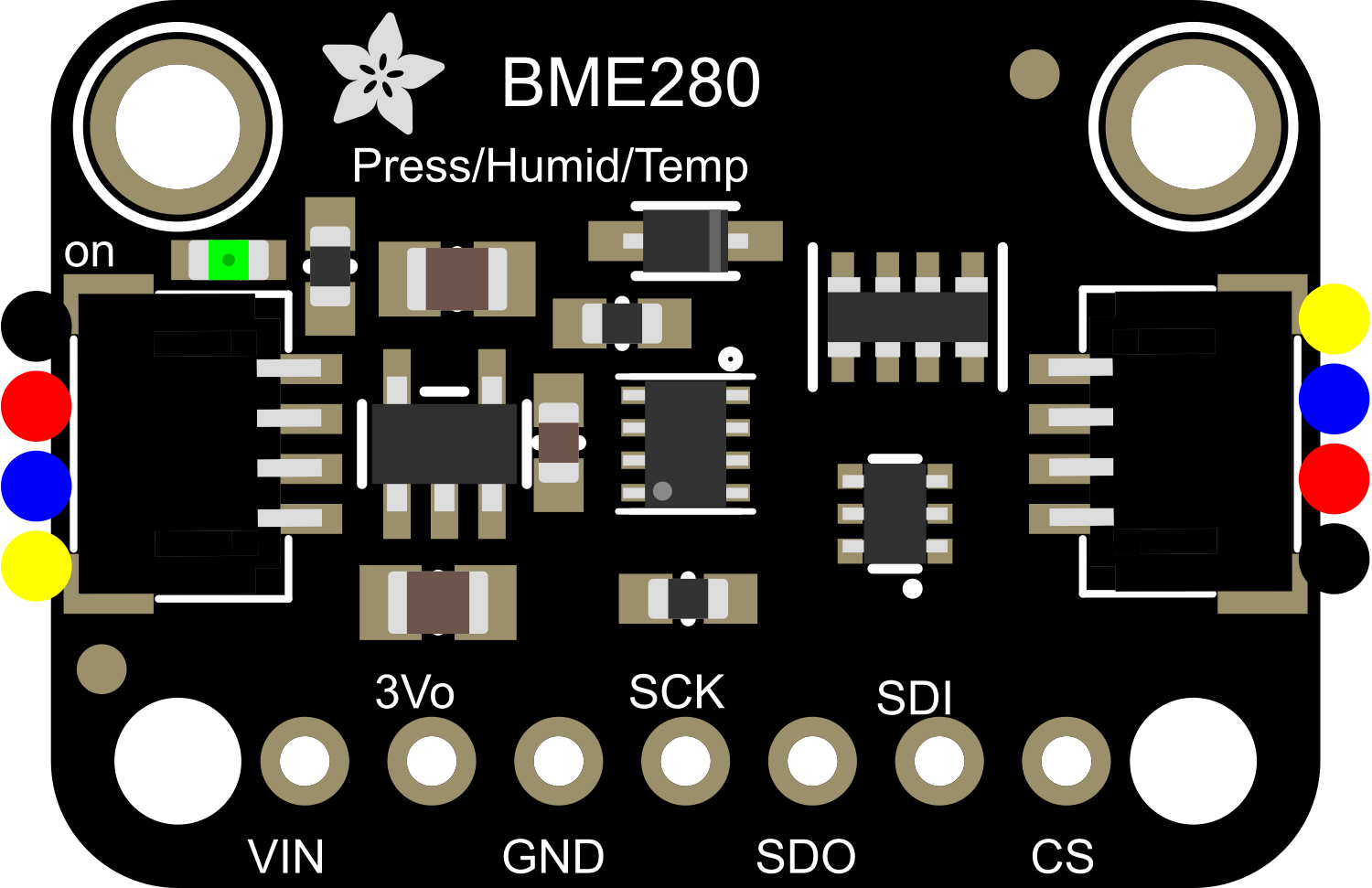
 Design with Adafruit BME280 in Cirkit Designer
Design with Adafruit BME280 in Cirkit DesignerIntroduction
The Adafruit BME280 is a versatile and high-precision environmental sensor module capable of measuring temperature, humidity, and barometric pressure. Its compact size and I2C interface make it ideal for a wide range of applications, including weather monitoring, indoor climate control, and IoT projects. The sensor's ability to provide accurate and reliable environmental data makes it a popular choice for hobbyists and professionals alike.
Explore Projects Built with Adafruit BME280
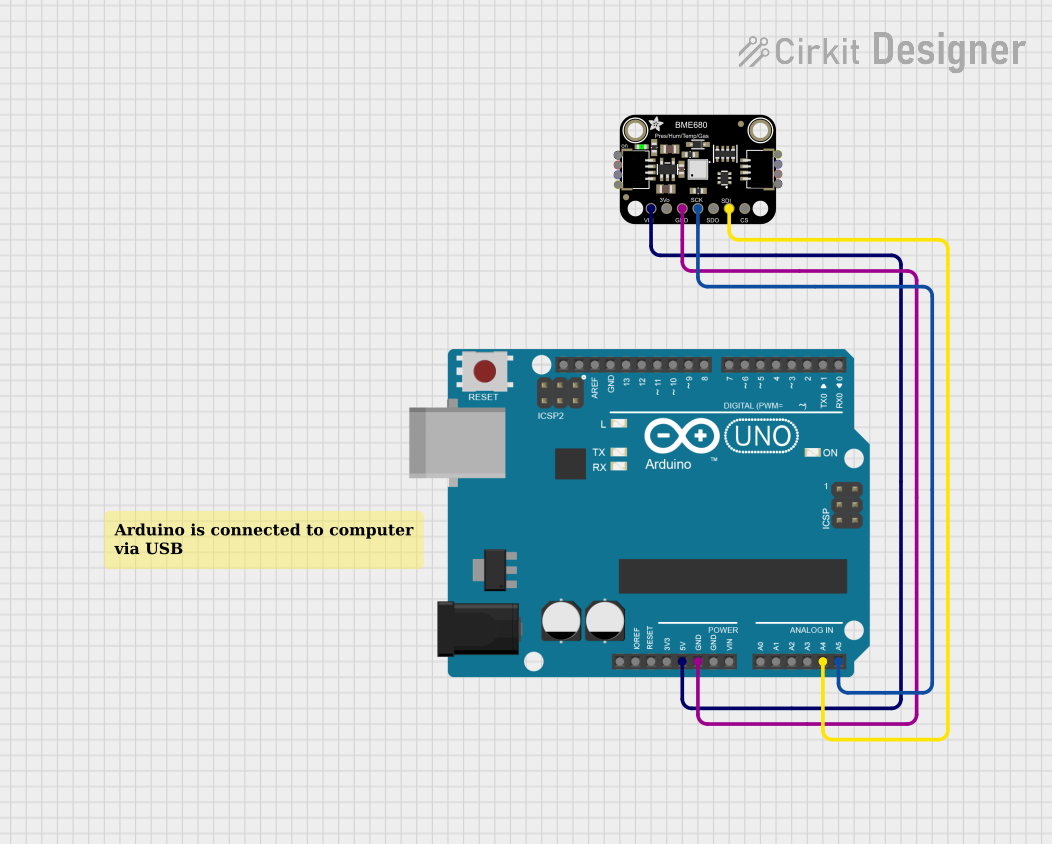
 Open Project in Cirkit Designer
Open Project in Cirkit Designer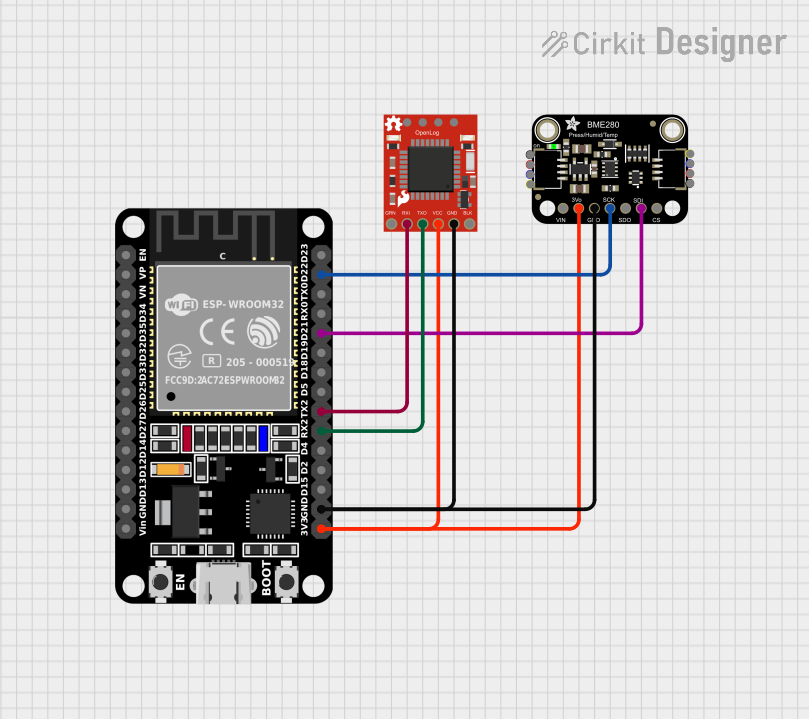
 Open Project in Cirkit Designer
Open Project in Cirkit Designer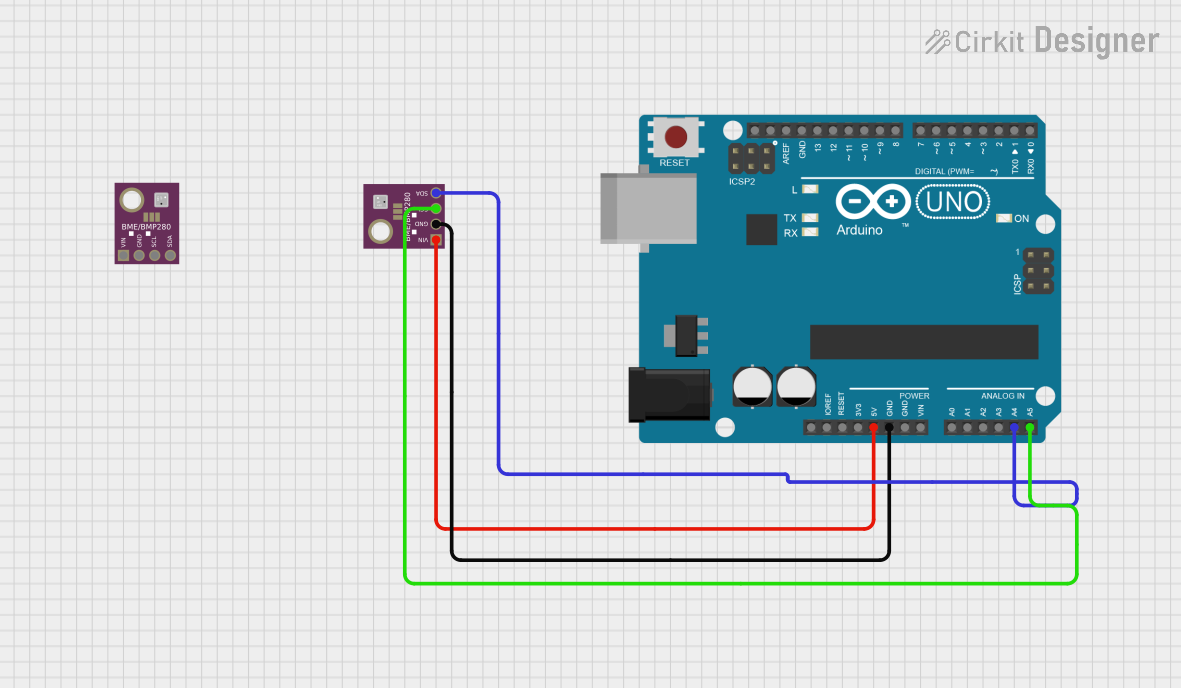
 Open Project in Cirkit Designer
Open Project in Cirkit Designer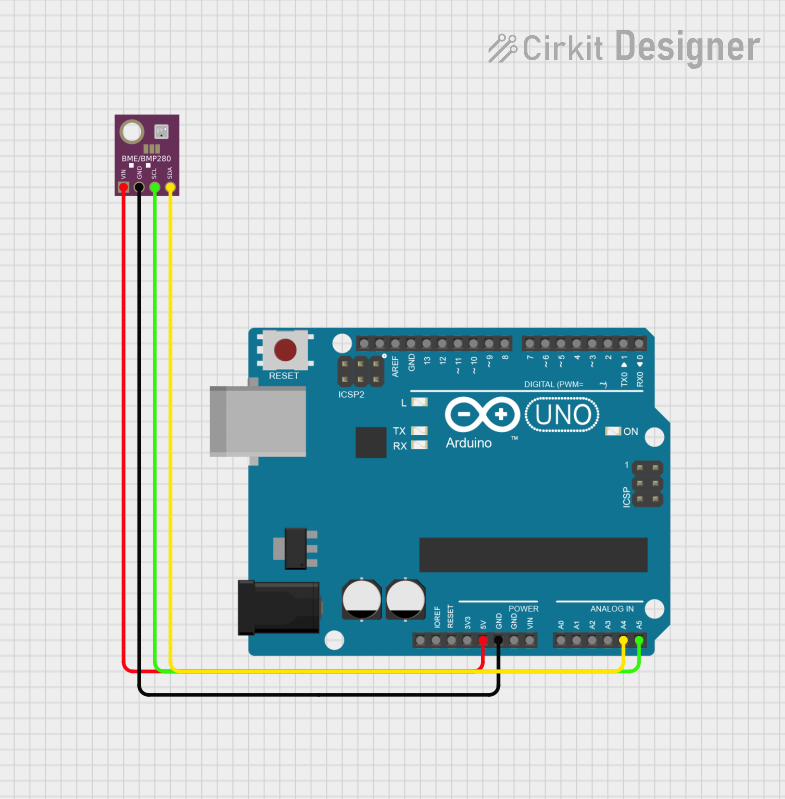
 Open Project in Cirkit Designer
Open Project in Cirkit DesignerExplore Projects Built with Adafruit BME280

 Open Project in Cirkit Designer
Open Project in Cirkit Designer
 Open Project in Cirkit Designer
Open Project in Cirkit Designer
 Open Project in Cirkit Designer
Open Project in Cirkit Designer
 Open Project in Cirkit Designer
Open Project in Cirkit DesignerCommon Applications and Use Cases
- Personal weather stations
- Home automation systems
- Environmental monitoring for HVAC systems
- Altitude and barometric pressure measurement for drones
- Data logging for climate research
Technical Specifications
Key Technical Details
- Supply Voltage: 1.71 V to 3.6 V
- Interface: I2C (up to 3.4 MHz), SPI (up to 10 MHz)
- Operating Range:
- Temperature: -40°C to +85°C
- Humidity: 0% to 100% RH
- Pressure: 300 hPa to 1100 hPa
- Accuracy:
- Temperature: ±1.0°C
- Humidity: ±3% RH
- Pressure: ±1 hPa
- Current Consumption: 0.16 µA @ 1 Hz sampling rate
- Response Time:
- Temperature: 1s
- Humidity: 1s
- Pressure: 1s
Pin Configuration and Descriptions
| Pin Number | Pin Name | Description |
|---|---|---|
| 1 | VDD | Power supply (1.71 V to 3.6 V) |
| 2 | GND | Ground |
| 3 | SCK/SCL | Serial Clock Line for I2C/SPI |
| 4 | SDI/SDA | Serial Data In for SPI, Data for I2C |
| 5 | SDO | Serial Data Out for SPI, optional for I2C |
| 6 | CS | Chip Select for SPI (active low) |
Usage Instructions
How to Use the Component in a Circuit
- Powering the Sensor: Connect the VDD pin to a 1.71 V to 3.6 V power source and the GND pin to the ground.
- I2C Communication: Connect the SCK/SCL pin to the I2C clock line and the SDI/SDA pin to the I2C data line. If using SPI, also connect the SDO and CS pins accordingly.
- Address Selection: The BME280 can have two different I2C addresses, 0x76 or 0x77, depending on the state of the SDO pin. Connect SDO to GND for 0x76 or leave it floating (or connect to VDD) for 0x77.
Important Considerations and Best Practices
- Ensure that the power supply is within the specified voltage range to prevent damage.
- Use pull-up resistors on the I2C data and clock lines as required by the I2C specification.
- Keep the sensor away from direct sunlight and heat sources to prevent inaccurate readings.
- For accurate pressure readings, calibrate the sensor at a known altitude or against a known pressure.
Example Arduino UNO Connection
- VDD to 3.3V
- GND to GND
- SCK/SCL to A5 (SCL)
- SDI/SDA to A4 (SDA)
Sample Arduino Code
#include <Wire.h>
#include <Adafruit_Sensor.h>
#include <Adafruit_BME280.h>
Adafruit_BME280 bme; // I2C
void setup() {
Serial.begin(9600);
if (!bme.begin(0x76)) { // Address 0x76 for SDO connected to GND
Serial.println("Could not find a valid BME280 sensor, check wiring!");
while (1);
}
}
void loop() {
Serial.print("Temperature = ");
Serial.print(bme.readTemperature());
Serial.println(" *C");
Serial.print("Pressure = ");
Serial.print(bme.readPressure() / 100.0F);
Serial.println(" hPa");
Serial.print("Humidity = ");
Serial.print(bme.readHumidity());
Serial.println(" %");
Serial.println();
delay(2000);
}
Troubleshooting and FAQs
Common Issues
- Sensor not detected: Check wiring, ensure correct power supply, and verify that the I2C address matches the one in your code.
- Inaccurate readings: Ensure the sensor is not exposed to direct sunlight or heat sources. Calibrate if necessary.
- No data on serial monitor: Confirm baud rate in the serial monitor matches the
Serial.beginrate in your code.
Solutions and Tips for Troubleshooting
- Double-check connections and solder joints.
- Use a multimeter to verify the voltage at the VDD pin.
- Implement a check in your code to verify sensor communication upon startup.
- Consult the sensor datasheet for detailed operational characteristics and advanced configurations.
FAQs
Q: Can the BME280 sensor measure altitude? A: Yes, the sensor can estimate altitude based on the barometric pressure reading and a reference sea-level pressure.
Q: Is the BME280 waterproof? A: No, the BME280 is not waterproof and should be protected from moisture and condensation.
Q: How can I extend the life of the sensor? A: Avoid exposing the sensor to pollutants and corrosive gases, as they can degrade the sensor's performance over time.
Q: Can I use the BME280 sensor with a 5V microcontroller? A: Yes, but ensure that the logic levels are shifted down to 3.3V to avoid damaging the sensor.